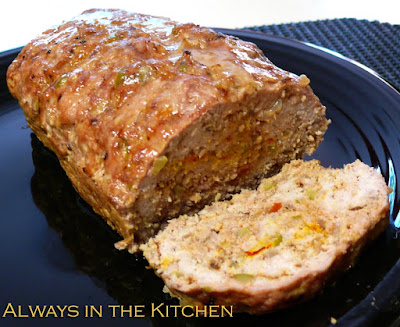 There isn't much about the pig that I don't like, culinarily speaking. I'm a huge fan of pork tenderloin, which is about as low-maintenance a piece of meat as you can find - tender, lean, boneless, and I'm very fond of ham dinners, as well - preferably from a nice, country-cured red ham, but I'll take an Alton Brown-style city ham with gingerbread crust, too. However, while I do pork chops, tenderloin, ribs, ham, and all manner of sausage (and I've roasted a pork loin or two), I've never really tried my hand at the classic Roast Pork. I recently decided that it was high time I did.
There isn't much about the pig that I don't like, culinarily speaking. I'm a huge fan of pork tenderloin, which is about as low-maintenance a piece of meat as you can find - tender, lean, boneless, and I'm very fond of ham dinners, as well - preferably from a nice, country-cured red ham, but I'll take an Alton Brown-style city ham with gingerbread crust, too. However, while I do pork chops, tenderloin, ribs, ham, and all manner of sausage (and I've roasted a pork loin or two), I've never really tried my hand at the classic Roast Pork. I recently decided that it was high time I did.If there is a culture that is pre-disposed towards expertise in the roasting of pork, it is Cuba. Roast pork sandwiches are a national dish, after all - either as "cubanos" or the smaller, snacktacular "medianoches". Where does the pork come from for these ubiquitous favourites? From a nice, seasoned roasted pork shoulder. The Cubans call it "pernil".
Start with a lesson from the best, I say!
I staggered back from the grocery store with a whopping (to me) 5.5 lb. boneless pork shoulder roast, and proceeded to do the following:
Cut some deep, short cuts into the roast (think shallow stabs with a pointy carving knife). Slather thoroughly with marinade, allow to rest, covered, at room temperature (but in a sealed environment, in this case my cold microwave) for three hours, then roast fatty-side up in a 350 F. oven for 3 hours (covered with tinfoil), uncover, remove juices to make gravy, and roast at 400 F. for another half-hour until dark golden brown. The internal temperature for those counting such things, was 170 F., which co-incidentally is the "pork/veal" setting on my probe thermometer. Allow to stand for fifteen minutes before roasting - which gives you more than enough time to make gravy.
And do, please do, bother to make gravy. A little roux, a little wine, about half of the juices from the pork, and a little water is all you need - no further seasoning required. Not only is it lovely on the black beans and rice that you should be serving with this, it makes an excellent medium for re-heating slices of pork for dinner the following day (assuming, of course, that it isn't all going to be et at once, or saved for cold sandwiches).
The pork was meltingly tender, thoroughly seasoned, and wonderfully flavourful - and possibly, even better the next day, re-heated in its gravy.
I should mention that classic pernil is made with a shoulder that is skin-on, to give a wonderful crackling, but that option was not available to me.
Here is the marinade:
4 cloves garlic
5 teaspoons kosher salt
1 tablespoon black peppercorns
1 handful fresh oregano leaves
All pounded to a smooth grey-green paste in the mortar & pestle, to which is then added: 2 tablespoons white wine vinegar, and 3 tablespoons vegetable oil.
This definitely requires an encore performance, and soon! Because it serves a lot of people, it would be perfect for a casual dinner gathering, so that might be just the thing.
















